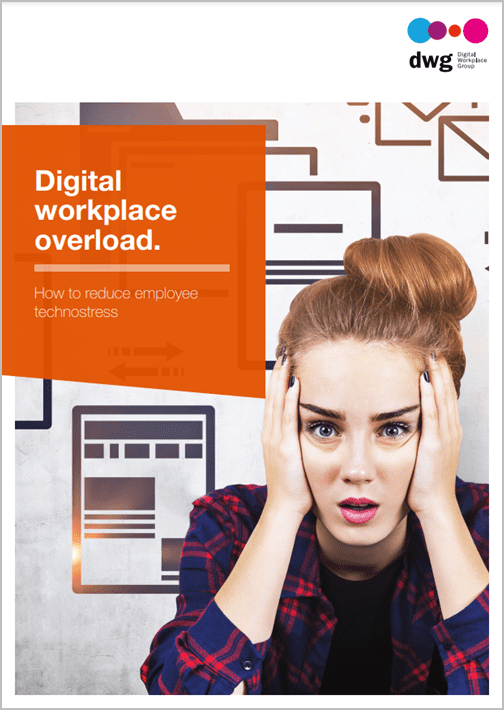Digital workplace overload
DWG’s new research report Digital workplace overload: How to reduce employee technostress explores the ever-present issue of the stress associated with the overwhelming number of apps and information that employees experience across the digital workplace.
The digital workplaces that are delivering so many benefits are also impinging on the valuable and finite cognitive resources of employees. For digital workplace teams, minimizing such costs for individuals and teams is core to the delivery of a digital workplace that enables optimal performance for the organization and maximizes the wellbeing of its people.
In this report, we tackle this challenge head on by:
- Exploring the context and concept of digital workplace overload.
- Zoning in on what the research reveals about the drivers of overload as well as the impacts it has on individuals and organizations.
- Exploring the psychological concepts that furnish greater understanding of what is going wrong for us as individuals in terms of overload.
- Looking at how to reduce digital workplace overload or avoid it altogether, with illustrative examples.
Authored by Elizabeth Marsh, the research report is available now for free download: Digital workplace overload: How to reduce employee technostress.
Cost
This report is available as a free download. Please refer to the DWG Research Terms & Conditions of Usage before downloading.
Need help?
For general inquiries: nancy.goebel@digitalworkplacegroup.com or telephone +44 (0) 20 7374 8061.
About DWG research
The Digital Workplace Group (DWG) carries out research into best practice in intranet and portal deployment. Covering the hottest topics in the intranet world, the studies we undertake are rooted in practical examples from among DWG member organizations as well as leading non-member companies. The results of this in-depth research act as a basis for decision-making, a source of ideas, and the basis for rich interactions between participants at DWG meetings. Generally, members are given exclusive access to our findings, although we do from time to time make a report available to non-members.
